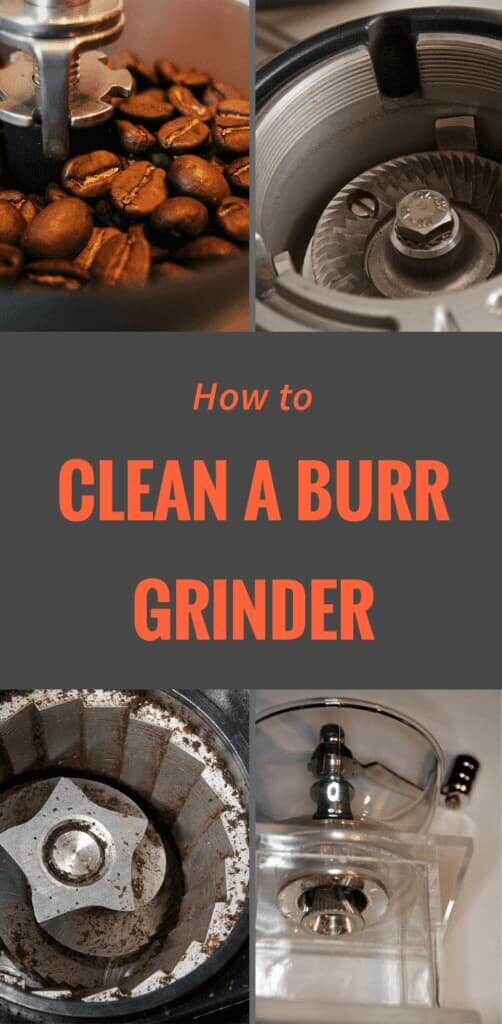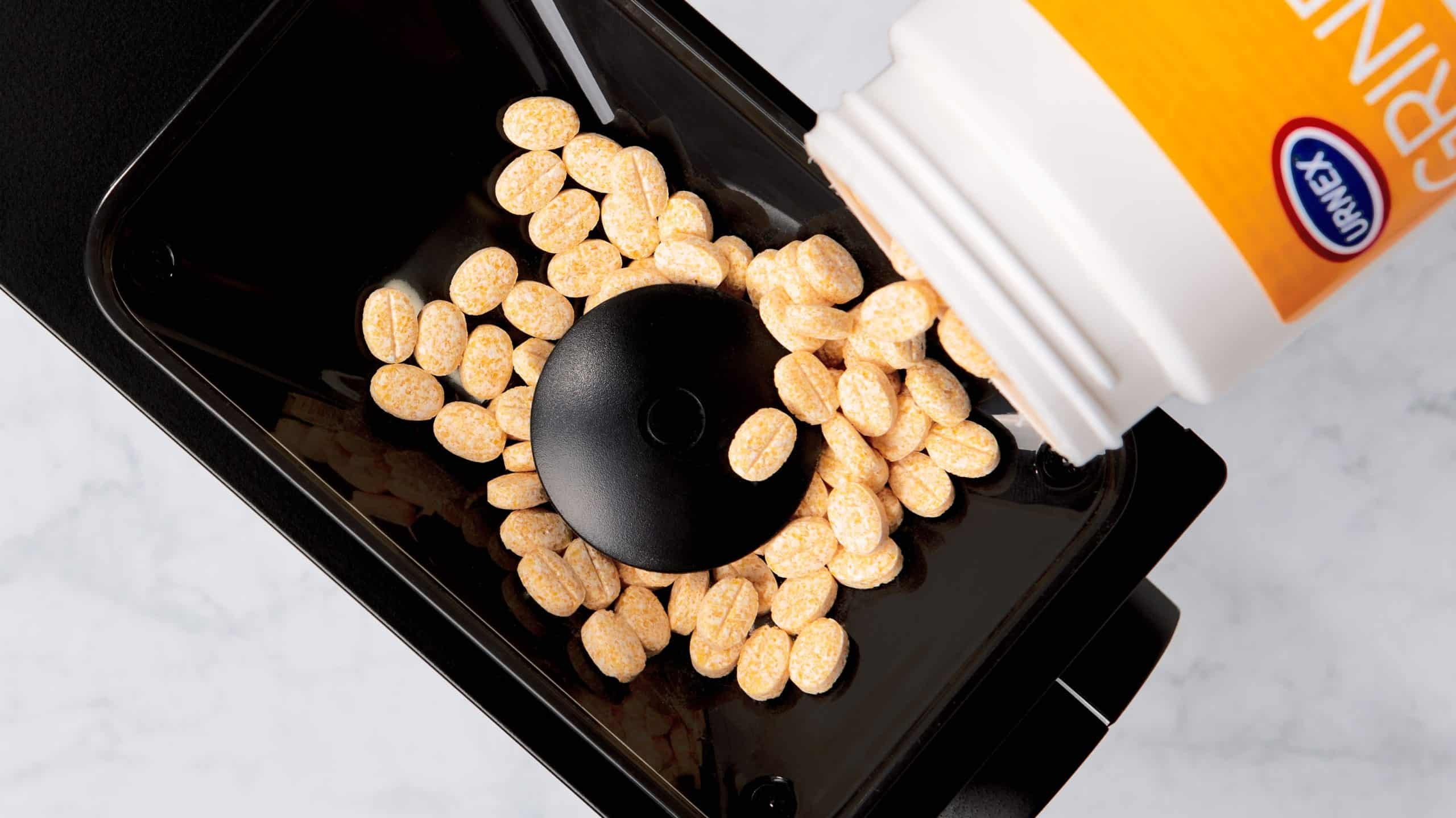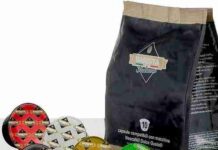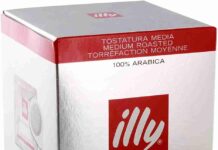If you’re tired of spending precious morning minutes battling with a clogged and messy coffee grinder, then look no further! We have unearthed the holy grail of coffee grinders that promises not only a superior grind but also a breeze to clean. In this article, we will reveal the ultimate time-saving coffee grinder that will revolutionize your morning routine. Get ready to bid farewell to the dreaded morning grind clean-up and say hello to convenience and efficiency!
This image is property of cdn.apartmenttherapy.info.
Benefits of a Clean Coffee Grinder
Improved Taste
Keeping your coffee grinder clean can have a significant impact on the taste of your brewed coffee. When coffee grinds accumulate in the grinder, they can become stale and impart an unpleasant flavor to your coffee. By regularly cleaning your grinder, you can ensure that each cup of coffee is made with fresh and flavorful grounds. Cleaning also removes any residual oils and residues that may have built up over time, allowing you to fully enjoy the distinct flavors and aromas of different coffee beans.
Longer Lifespan
Regularly cleaning your coffee grinder can also extend its lifespan. When coffee grounds accumulate inside the grinder, they can create friction and heat, leading to wear and tear on the machine’s internal components. Additionally, oils and residues can build up, causing the grinder to clog and reducing its efficiency. By cleaning your grinder regularly, you can prevent these issues and ensure that your grinder continues to function optimally for years to come.
Factors to Consider
Removable Components
One important factor to consider when choosing a coffee grinder is whether it has removable components. Grinders with removable parts are generally easier to clean since you can take out the hopper, burrs, or blades for a more thorough cleaning. This allows you to access hard-to-reach areas and ensures that no coffee residue is left behind. Before purchasing a grinder, check whether its main components are removable and dishwasher safe for added convenience.
Ease of Disassembly
In addition to having removable components, the ease of disassembly is another crucial factor to consider when selecting a coffee grinder. A grinder that can be easily disassembled means less time and effort spent on cleaning. Look for grinders that have a simple and straightforward disassembly process, with clear instructions provided by the manufacturer. This will make the cleaning process much more convenient, allowing you to spend more time enjoying your freshly ground coffee.
This image is property of www.seriouseats.com.
Blade Grinders
Overview
Blade grinders are a popular choice for many coffee enthusiasts due to their affordability and simplicity. These grinders consist of a spinning blade that chops the coffee beans into smaller pieces. While they are generally less expensive than burr grinders, they can produce uneven grind sizes, which may affect the taste of your coffee. However, if you own a blade grinder, it is still important to keep it clean to maintain the best possible flavor.
Cleaning Process
To clean a blade grinder, start by unplugging the machine and removing the coffee beans from the hopper. Next, use a brush or a damp cloth to wipe away any loose coffee grounds or residue from the blade and the internal components. Be cautious when handling the sharp blade, and ensure that it is completely dry before reassembling the grinder. Regular cleaning of a blade grinder is crucial to prevent the accumulation of stale coffee grounds and oils that can affect the taste of your brewed coffee.
Burr Grinders
Overview
Burr grinders are known for their ability to produce consistent and precise grind sizes. They are equipped with two revolving burrs that crush the coffee beans between them, resulting in a more uniform grind. Burr grinders are generally more expensive than blade grinders, but they offer superior performance and control over the grind size. To maximize the longevity and performance of your burr grinder, regular cleaning is essential.
Cleaning Process
To clean a burr grinder, start by emptying any remaining coffee beans from the hopper and grinding chamber. Remove the burrs according to the manufacturer’s instructions, taking care not to damage the delicate parts. Clean the burrs and other removable components with a brush or a damp cloth, ensuring that all coffee residues and oils are removed. Once everything is dry, reassemble the grinder and run a small amount of uncooked rice through it to remove any remaining oils or particles. Regular cleaning of a burr grinder will help maintain its consistency and ensure the best possible coffee flavor.
This image is property of www.homegrounds.co.
Manual Grinders
Overview
Manual grinders are a popular choice for coffee enthusiasts who enjoy a more hands-on approach to grinding their beans. These grinders require manual effort to operate, usually through a hand crank. While they may require a bit more effort, manual grinders offer full control over the grinding process and are often more compact and portable than electric models. Proper cleaning of a manual grinder is essential to maintain its performance and avoid any clogging issues.
Cleaning Process
To clean a manual grinder, start by emptying any remaining coffee beans from the grinding chamber. Disassemble the grinder according to the manufacturer’s instructions, paying close attention to any removable parts. Use a brush or a damp cloth to remove any coffee residue and oils from the burrs and internal components. Rinse the removable parts with warm water and ensure they are completely dry before reassembling the grinder. Regular cleaning and maintenance will ensure that your manual grinder continues to deliver consistent grind sizes and the best possible coffee flavor.
Electric Grinders
Overview
Electric grinders are the most common type of coffee grinder found in households and commercial settings. They offer convenience and speed, allowing you to grind coffee beans with the push of a button. Electric grinders are available in various sizes and capacities to fit different brewing needs. Cleaning your electric grinder regularly is essential to maintain its performance, prevent any flavor taint, and ensure the longevity of the machine.
Cleaning Process
To clean an electric grinder, start by unplugging the machine and removing any remaining coffee beans from the hopper. Use a brush or a damp cloth to wipe away any coffee grounds or residue from the hopper, grinding chamber, and blades or burrs. Be cautious when cleaning the blades or burrs, as they can be sharp. For a more thorough cleaning, you can also use a dedicated grinder cleaning product or natural cleaning solutions. Once everything is clean and dry, reassemble the grinder and enjoy fresh, flavorful coffee with each use.
This image is property of Amazon.com.
Grinder Brush for Cleaning
Types of Grinder Brushes
A grinder brush is a handy tool designed specifically for cleaning coffee grinders. These brushes come in various sizes and materials to suit different types of grinders. Some brushes have bristles made of nylon, while others have natural bristles made of materials like boar hair. Additionally, grinder brushes may have a handle or a small brush head that can fit into tight spaces, making it easier to clean hard-to-reach areas of your grinder.
Proper Usage
To use a grinder brush effectively, start by unplugging the grinder and removing any coffee beans. Gently brush the grinder’s burrs, blades, and internal components to remove any coffee residue or oils. Take care not to apply excessive force, as this can damage the delicate parts of the grinder. After brushing, wipe away any loosened residue with a damp cloth, ensuring that the grinder is completely dry before use. Regular use of a grinder brush will help keep your grinder clean and maintain its performance.
Cleaning Tips and Tricks
Frequency of Cleaning
The frequency of cleaning your coffee grinder depends on how frequently you use it. As a general guideline, it is recommended to clean your grinder at least once a month, or every 30-40 pounds of coffee ground. However, if you use oily or flavored beans, it is advisable to clean the grinder more frequently to prevent any flavor taint. Additionally, if you notice a decline in the grinder’s performance or an unusual taste in your coffee, it may be a sign that it requires immediate cleaning.
Avoiding Moisture Buildup
Moisture buildup can be detrimental to the performance and longevity of your coffee grinder. After cleaning, ensure that all components are thoroughly dry before reassembling and using the grinder. Moisture can cause the coffee grounds to clump together, resulting in an uneven grind and potentially clogging the machine. To prevent moisture buildup, store your grinder in a dry and well-ventilated area, away from steam or excessive humidity. By taking these precautions, you can ensure that your grinder remains in optimal condition.
This image is property of assets.epicurious.com.
Cleaning Products for Coffee Grinders
Natural Cleaning Solutions
If you prefer using natural cleaning solutions, there are several options available for cleaning your coffee grinder. One popular method is to use uncooked rice. Simply run a small amount of dry, uncooked rice through the grinder, and it will help remove any oils or particles. However, be cautious with this method, as rice can be abrasive and may damage certain grinders. Alternatively, you can use a mixture of baking soda and water to create a paste and apply it to the grinder’s internal components. Afterward, wipe away the paste with a damp cloth and ensure everything is dry before use.
Commercial Cleaning Products
There are also commercial cleaning products specifically designed for cleaning coffee grinders. These products are often available in the form of cleaning tablets or powders. They are formulated to remove coffee residue, oils, and other build-up effectively. To use a commercial cleaning product, simply follow the instructions provided by the manufacturer. It is essential to choose a cleaning product that is suitable for your specific type of grinder and read any warnings or precautions before use.
Maintenance and Care
Regular Inspection
In addition to regular cleaning, it is important to perform periodic inspections of your coffee grinder. This allows you to identify any potential issues or signs of wear and tear. Check the burrs, blades, and other components for any visible damage or clogging. If you notice any unusual noises, inconsistent grind sizes, or decreased performance, it may be time to replace worn-out parts or seek professional maintenance. By staying proactive and addressing any issues promptly, you can ensure that your grinder continues to deliver excellent results.
Lubrication
Proper lubrication is essential for maintaining the smooth operation of your coffee grinder. Some grinders may require periodic lubrication to reduce friction and ensure consistent performance. However, it is crucial to refer to the manufacturer’s recommendations for lubrication and use suitable food-grade lubricants. Avoid using any lubricants that are not explicitly approved for use with coffee grinders, as they may contaminate your beans and affect the taste of your coffee.
In conclusion, regular cleaning and maintenance of your coffee grinder are essential for both the taste of your coffee and the longevity of the machine. By keeping your grinder clean and free from stale coffee grounds, oils, and residues, you can enjoy the true flavors and aromas of freshly ground coffee. Consider the factors of removable components and ease of disassembly when choosing a grinder, and follow the appropriate cleaning process based on the type of grinder you own. Utilize a grinder brush for effective cleaning and consider the frequency of cleaning and avoiding moisture buildup. Choose between natural cleaning solutions or commercial cleaning products, and perform regular inspections to address any potential issues. With proper cleaning, maintenance, and care, your coffee grinder will continue to provide you with delicious cups of coffee for years to come.










































